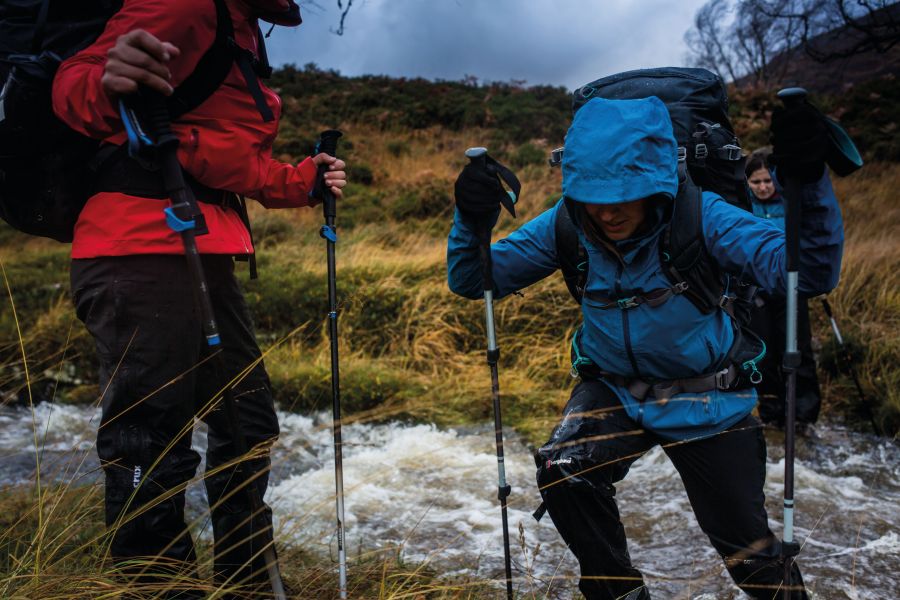Toasty hands are not just a luxury on the hills, but a necessity. So, with many different options on the market, The Great Outdoors is on hand to answer the question: what are hiking gloves and which should you choose?
On mountain terrain, it’s vitally important to protect your extremities. If you’re looking for a pair of hiking gloves, you’ll be faced with an array of possibilities, all fit for function and purpose. So, here we’ll ask what are hiking gloves, what are their function and what are the different types.
Words: Francesca Donovan | Main image: Jessie Leong
It’s worth noting that, as with any mountain gear, your personal needs will be different from those of the person walking next to you. This is particularly important to consider when talking about gloves. Those who run hot will need less protection than those who suffer poor circulation and feel the cold, as demonstrated by our cross-section of the best hiking gloves.
What features should you look for in hiking gloves?
Outdoor gloves are often decked out with features fit for specific activities. You’ll likely have to compromise to find your perfect fit. For example, you might feel the cold and thus lean towards a mitt design, but also need dexterity for climbing. In this case, you’ll need to find specialist fingered gloves with thermal insulation properties that can offer a high enough level of warmth.
Warmth
Depending on the conditions you’re facing, warmth is likely to be the most vital feature you look for in winter hiking gloves. But in addition to cold, wind and rain also contribute significantly to heat loss, so (particularly if you’re likely to be spending time in Britain’s volatile climate) it’s likely that you’ll also be looking for gloves with strong waterproof and windproof functionality, as well as insulation.
Warmth can come from a number of technical features combined with appropriate materials – such as wool, synthetics, leather and fleece lining – and design. Mitts offer more warmth by utilising your own body heat and allowing it to circulate than fingered gloves, but have limited dexterity.
Like clothing worn on your torso, gloves can be ‘layered’: e.g. with a thin liner glove made from fleece or merino as the first layer; a warm and waterproof ‘gauntlet’ glove as the second layer; and then a pair of thick mitts as a possible third layer for very cold situations.
Waterproofing and water resistance
No glove is entirely waterproof – the big hole for your hand is the main culprit here – so some hillwalkers choose to take a few pairs of gloves with them on longer excursions, particularly on demanding winter days. Look for a good quality waterproof membrane in your gloves, which will keep rain and moisture at bay while also allowing your hands to breathe.
Some gloves are not fully waterproof, but offer a certain amount of water resistance (i.e. they will repel some moisture but not be entirely waterproof).
Windproofing
Wind chill is the biggest enemy of warm hands; a hand exposed to a harsh, biting wind will cool a lot quicker than in still conditions. A waterproof glove will also be windproof, but some gloves may offer windproofness without being fully waterproof. Lighter gloves made from wool, for example, often offer very little windproofing.
Dexterity
For hiking, you often need a certain amount of freedom of movement in your hands; for example, using walking poles or ice axes, getting things in and out of your rucksack, taking pictures, tackling technical routes involving scrambling, or attaching crampons. Better dexterity usually means less in the way of warmth, so it’s about finding a balance that works for you. It’s always best to have gloves which are dextrous enough to allow you to perform as many actions as you can without taking them off completely.

Iona Andean testing out her gloves’ dexterity in the Grey Corries. Credit: Jessie Leong
Durability
Your gloves will need to be durable enough to withstand the rigours of outdoor use, so you’re not left exposed when it really matters. Look for reinforced fingers and palms, particularly if you’re thinking of taking on a lot of scrambling or technical terrain. A durable waterproof membrane is important and likewise, invest in gloves with strong seams – or no seams – and stitching.
Fit
This one is completely personal. The advice to follow is to seek a comfortable – whatever that means for you – and snug fit to allow for good insulation but avoid any unpleasant rubbing during wear. Make sure they’re not too tight, also, as circulation can be hampered by gloves that are too small. Finally, look for a pair of gloves without internal seams if you’re worried about rubbing. It’s always wise to try gloves on in person before buying as no amount of helpful product description online will demonstrate exactly how a pair of gloves will mould to you and your needs.
Special features
How many times have you come across a stray glove on the hills? Things like clasps to keep gloves from going walkies are of great practical use to most hillwalkers. A touchscreen-compatible fingertip can also be useful for operating electronic devices, like handheld GPS devices or smartphones.
All of these features can be found – to varying degrees – depending on the type of hiking glove you choose. So, let’s take a look at those options.
What are the different types of hiking glove?
Alpine gauntlets
A mountaineer’s best friend can be found in an alpine gauntlet. In this context, they usually have long cuffs and thick and durable outer shells. These can be designed for winter climbing, walking and skiing, and are built according to function so come with a plethora of technical features. If you’re ready to purchase, be sure to read our expert gear testers’ reviews of the best winter gloves.

Credit: Jessie Leong
Glove liners
Liner gloves can sit underneath outer shells in cold and wintery conditions, and in the warmer months they can be useful as ‘standalone’ gloves. Often made from fleece or merino wool, some ‘liner’ gloves can also come with a certain amount of water or wind resistance, bolstering their versatility through the year.
Hybrid gloves
It’s understandable that hillwalkers don’t want to fork out a lot of money for numerous pairs of gloves for different conditions. So, some brands have offered budget-conscious hillwalkers 2- or 3-in-1 hiking gloves. With these, you can cover more ground in a single purchase but you might have to compromise on some qualities. Examples include the Outdoor Research Versaliner.
Likewise, hybrid gloves can also apply to specialist models that bridge the gap between gloves and mitt, providing dexterity to move your index finger and thumb, while encasing your other fingers in a mitt-like construction.
Fingerless gloves
A great option for the scramblers among us, fingerless gloves give the most dexterity and grip when spending time on rock. The obvious downside is a lack of warmth or protection for your extremities but they do also tend to be marginally cheaper than full-length gloves. Often designed with climbing, biking and technical routes in mind, these are tough and durable.
Sun gloves
There are gloves that suit fair-weather walkers and climbers, also. While you may not be worried about cold or wet weather hampering your hands, there is the damaging nature of UV rays to think of when you’re outdoors for long days in the sun. Sun gloves – and sun sleeves – are designed to protect your skin while offering a lot of breathability and they’re often built with sweat-wicking properties to avoid over-heating in the hands.
Heated Gloves
On the opposite end of the spectrum, heated gloves can provide an extra heat boost for those who are venturing on slower, low-level rambles throughout winter during which dexterity, grip and weight are less important. Due to bulk, and the necessity to charge up some models, these aren’t ideal for backpackers.
For more gear advice, check out our gear experts’ best insulated jackets and the best poles for hiking.








